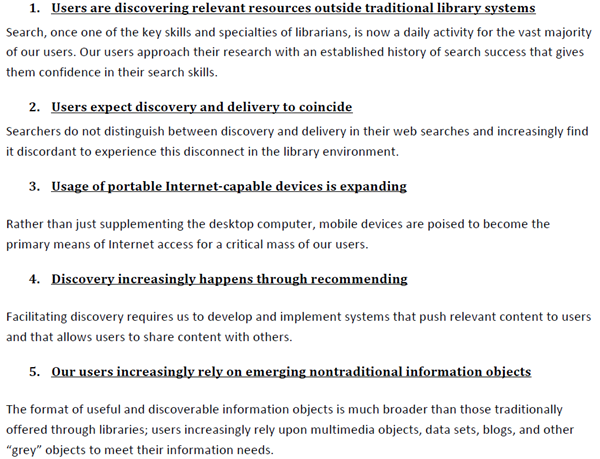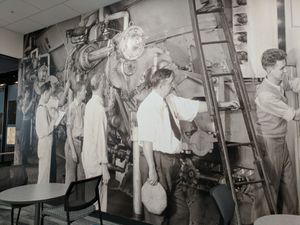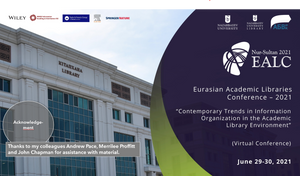We are awash in assisted thinking, as I may have remarked. One document that is worth a look is Discoverability produced earlier this year by a team at the University of Minnesota.
In October 2008, the Web Services Steering Committee at the University of Minnesota Libraries created the Discoverability exploratory subgroup, charged to recommend ways to make relevant resources more visible and easier to find, particularly within the user’s workflow. This report shares the findings of Phase 1, in which the primary activity was data‐gathering and analysis. Phase 2 of the group’s work will take the discovery principles identified here and recommend specific strategies for the future. The report consists of four main sections. The first section is a brief description of the process and methodology. The second is a discussion of five key trends related to discovery that were identified in the literature, including a description of how each trend is reflected in current use of local systems. The third section contains a set of suggested principles to guide future decisions related to discovery. Finally, we have collected and analyzed usage data from many of our local systems. These reports are collected in our fourth section and are summarized in “A Month of Library Discovery”. We have also included specific recommendations regarding future data‐gathering and analysis. Our appendices include a copy of the group’s charge, a review of discovery principles at peer institutions, and a set of web statistics reports for the University Libraries’ many websites. [Summary of Discoverability: phase 1. Final report. U of Minnesota.]
I particularly liked the way in which they identified trends through their environmental analysis and then looked for corroboration (or otherwise) in their own usage logs. This combination is quite effective.
Here are the trends they identified:

They tracked library systems usage during a ‘month of library discovery’ and present this summary of findings:

There are many interesting nuggets. In a discussion of the power of recommendation and ‘collective intelligence’ to drive traffic to resources, for example, they note that almost 15% of people who came to the Archives and Special Collections area of the website came there from Wikipedia. There is interesting discussion of how resolver requests break down between internal (e.g. A-Z lists) and external sources (e.g. Google and PubMed). The majority of library website pages are visited infrequently.
The report is available from the library’s repository. I hope that the authors are considering putting some of their findings about patterns of usage into the literature.
Related entries:



